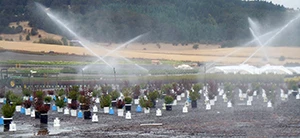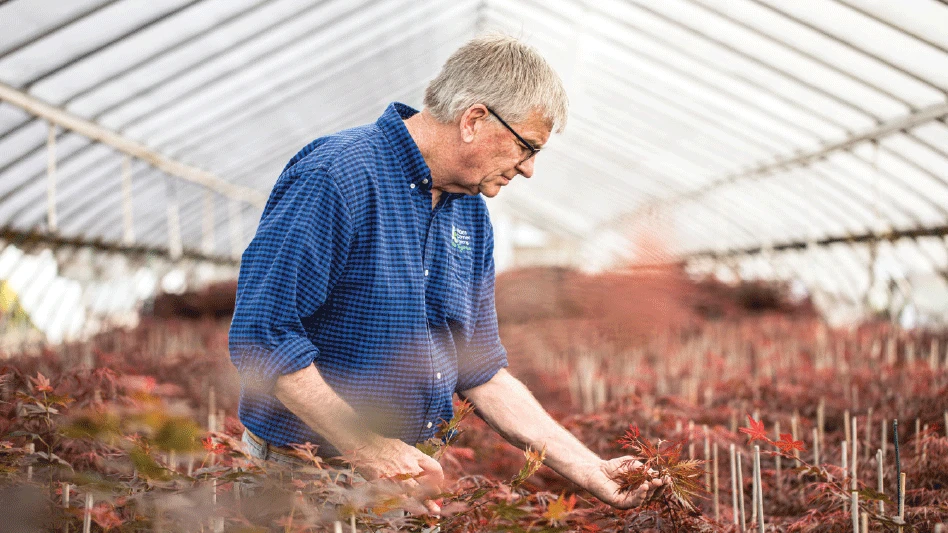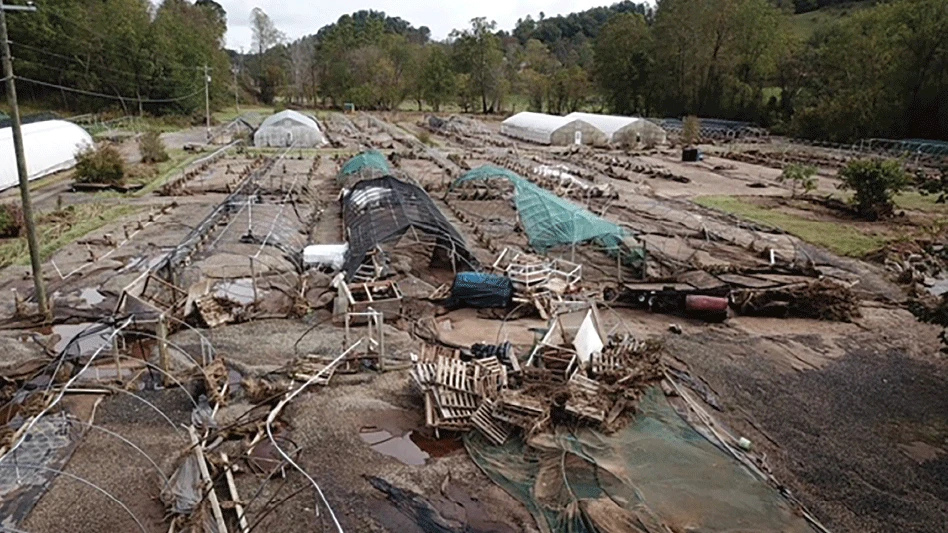
Maximizing the efficiency of crop water application is a practical way to extend finite water supplies. Increasing water efficiency, so plants use most or all of the water applied, minimizes the introduction of agrichemicals to water containment ponds and the environment while reducing energy (i.e. electric) and other inputs used to move, filter and treat irrigation water before re-application. Placing the correct amount of water directly on the intended crop increases the profitability of your nursery and greenhouse operation, via enhanced resource efficiency (water, energy, fertilizer and herbicide). Taking the initiative to increase water use efficiency now is a proactive step toward meeting the water availability and regulation challenges of the future.
Design considerations
Water-use efficiency begins with irrigation design. The first choice is that of application method, whether overhead (impact or boom), drip or micro-irrigation (i.e. spray stakes) etc. Drip or micro-irrigation systems apply water directly to the container substrate and are the most efficient in terms of water application; however, these systems typically require higher time inputs for management and maintenance. Drip or spray stakes are recommended for size #5 or #7 containers or greater, as these larger containers typically cover only 9-35 percent of the production area. Utilizing micro-irrigation reduces both the total volume pumped, and volume pumped at any one time, resulting in lower capacity demand or being able to irrigate more areas at a given time. Overhead irrigation is more economical for #5 containers or smaller, because plant densities and interception efficiencies are higher. Overhead systems provide head-to-head coverage using partial and full arc heads, with matched precipitation rates (the same amount of water is applied regardless of arc), minimizing water application to roads and non-crop areas. Ideally, risers should be no higher than six feet and sized to produce larger droplet sizes that reduce the impact of wind and evaporation.
System maintenance
The next step in efficient irrigation is regular maintenance and audits of your irrigation system. Maintenance entails fixing broken sprinklers, checking orifice sizes and replacing worn nozzles, ensuring risers are vertical, confirming emitters and spray-stakes are working properly, and keeping a running log of water meters to locate hidden leaks. Performing irrigation audits is more time intensive. A system assessment begins with a system in good working order, as outlined above. A free tutorial on running an irrigation audit can be found at www.waternut.org/moodle (“Irrigation System Audits” under “Management Tools”). Uniformity audits can be evaluated on a drip, boom, microsprinkler or overhead irrigation system, and will give you an idea of irrigation application efficiency in a given production area. The more uniform your irrigation system is within a block, the less time you need to irrigate the driest area to ensure the crop is adequately watered. Acceptable uniformity is 80 percent or greater. For example, let’s assume you have to run your irrigation system for an extra 30 minutes to get the driest 30 percent of your block wet. During those 30 minutes, you are wasting water for 70 percent of your block. By increasing your uniformity, you are saving water on the 70 percent of your block that you were initially overwatering. Inefficient irrigation (over-applying, under-applying, or misapplying) does not just waste water. A host of additional problems can be magnified through poor water management including algae and pest-management problems, leaching fertilizers and increased disease pressure. A national irrigation survey was conducted in 2012, and growers reported testing uniformity on 6.2 percent of the acres reported. More than 73 percent of the acreage reported was overhead irrigated, which could benefit from an audit.
Read the rest of the story here.





